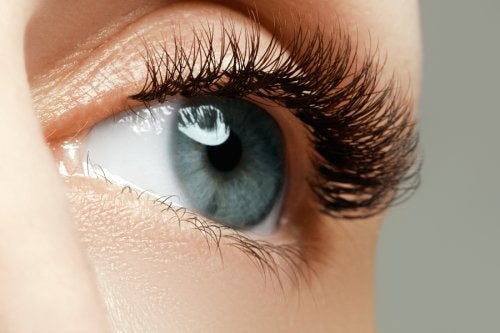-
Glasses Cleaning and Care Tips
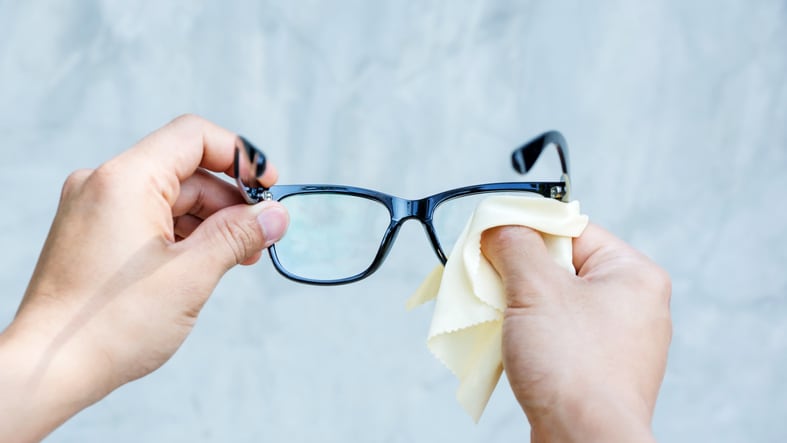
Eyeglasses aren’t just an important tool for improving your vision- they’re an investment. Once you’ve found the right pair, you’ll want to take excellent care of them, so that they’ll last a long time and keep you seeing clearly. Here, we offer some glasses cleaning and care tips to help you care for your glasses the right way, not just to keep them clean, but also to prevent scratches and other damage.
First things first: some dos and don’ts for keeping your lenses sparkling clean.
- Do start with clean hands. Before you ever touch your eyeglasses, wash and dry your hands thoroughly. Make sure to use lotion free soap and dry with a clean, lint-free towel if you’re going to be working with your glasses.
- Don’t pull off your glasses and rub them with your shirttail. Your clothing can have dust, debris, and particles that can scratch your glasses. Using a microfiber cloth designed to clean glasses is a better bet, but a dry cloth is still not as good as water.
- Do use lukewarm water to rinse your glasses. Hot water can damage some eyeglass coatings, but lukewarm water will go a long way toward removing the dust and debris that can scratch your lenses when you’re cleaning them.
- Don’t use saliva to clean the lenses. Your spit is not going to do a good job, and it’s also not hygienic.
- Do use lotion-free dishwashing liquid to help get them really clean. Use only a small amount, because dishwashing liquids are typically very concentrated. Gently rub the lenses on both sides, then clean all parts of the frame, including the nose pads and the part that goes behind your ears.
- Don’t use household glass or surface cleaners on eyeglasses. The chemicals used in these products can damage the coating on your glasses.
- Do rinse away all traces of soap. If soap is left on your lenses, they’ll smear when you dry them.
- Dry with a shake and a polish. Shake the glasses to get most of the water off of the lenses, then look them over carefully to make sure they’re clean. Using a clean, lint-free towel that hasn’t been laundered with a dryer sheet, carefully dry the frames and lenses. Make sure the towel is completely clean, because dust, dirt, cooking oil, or any other substance can cause scratches on your lenses. If any spots remain, gently buff them with a clean microfiber cloth.
- Don’t use random fabrics to clean your lenses. Paper towels, tissues, napkins, and toilet paper can all leave your glasses linty, scratched, or smeared.
Now that you know how to clean your glasses, how can you keep them free of scratches? When you purchase glasses, opt for scratch resistant coating, to make it easier to keep them from harm. Further, one of the most important things you can do is to make a rule for yourself: if they’re not on your face, they’re in their case.
Remember, no pair of eyeglasses will last forever. Over time, normal use and exposure to the environment is bound to create a few scratches. Occasionally, you’ll probably even drop or misplace your eyeglasses. Even with scratch resistant coating, your glasses are no scratch proof. Your eye care provider can help you with an anti-scratch warranty for your lenses, but ultimately, you’re going to need to replace them because scratches in the lenses can irritate your eyes.
When it’s time to get new glasses, it’s time to have a complete eye exam to make sure you’re using the right prescription. If you are looking for an eye doctor, the Gerstein Eye Institute in Chicago can help. Since 1968, the Gerstein Eye Institute has been providing exceptional ophthalmologic care to patients in the Chicago area. With decades of experience in ophthalmology, our certified professional staff members work hard to provide the kind of personalized care that keeps patients coming back year after year, eventually entrusting the eye health of their children and grandchildren to us as well. To schedule an appointment, call us at (773) 973-3223 or contact us through our website.
-
Seasonal Allergies and Eye Care
Spring is on its way, bringing with it pollen, in all its allergy-inducing glory. If you’re sensitive to pollen, you’re probably already gearing up for a miserable couple of months, but it doesn’t have to be that way. You can minimize allergens in your home, protect yourself outside, and give your eyes the care they deserve. Here, we offer a few tips from the experts on seasonal allergies and eye care. Pollen is the main cause of springtime allergies, and it can travel for miles before finding its way into your nose. If you’re allergic to pollen, your immune system mistakes it for something dangerous and releases antibodies to attack it. Histamines are released into the blood, triggering a runny nose, itchy eyes, and other allergy symptoms. Fortunately, there are some good ways to keep pollen at bay.
- Don’t let pollen into your house. Even though the weather may be pleasant, it’s best to keep doors and windows closed, especially at night. Stay inside as much as possible in the early morning hours, because pollen is typically emitted between 5 and 10 am. If you’ve been outside, take a shower and change clothes as soon as you get home, and never dry clothing or linens outside, where it can pick up pollen.
- Clean your home thoroughly to remove allergens. Pollen is one culprit, but there’s also dust, pet dander, mold, and cockroach droppings to contend with. Cleaning on a regular schedule can help minimize allergens in your home and help you breathe easier. Wear a dust mask when you’re cleaning, and use a damp or treated cloth to dust, so you don’t scatter the dust. Vacuum once or twice a week, using a vacuum with a HEPA filter. Wash your bedding at least once a week in hot water, and dry it in a hot dryer. If you have pets, bathe them once a week to keep dander under control, and wash your hands any time you pet an animal.
- Protect yourself from allergens when you’re outside. Wear glasses, to keep pollen out of your eyes. If you want to enjoy the outdoors, do it on cloudy, windless days, because pollen levels are higher when it’s dry, warm, and windy. Finding out what you’re allergic to can be very helpful: if you can recognize it on sight you can more easily avoid it, and if you know what it is you can stay inside during its high pollen hours.
- If you’re suffering from eye allergies, have a plan to treat them. Using lubricating eye drops can help rinse away pollen, as can saline nose spray. Decongestant eye drops can constrict the blood vessels in the eyes, reducing redness, but shouldn’t be used for more than three days. Oral antihistamines can sometimes help, but in some cases, they can cause dry eyes and may worsen eye allergy symptoms.
- Ask your doctor for help. There are prescription medications that can be helpful in controlling eye allergy symptoms. There are antihistamine, mast cell stabilizer, NSAID and corticosteroid eye drops that can alleviate or prevent allergy symptoms. Your doctor may also prescribe non-sedating oral antihistamines, or recommend allergy shots.
One of the leading eye centers in Illinois, the Gerstein Eye Institute in Chicago has been helping patients take care of their eyes since 1968. Our certified professional staff has decades of ophthalmologic experience and has worked together to perform over 20,000 procedures. Dr. Gerstein, well-versed in the most advanced technologies, is committed to helping patients find the treatment that’s right for you. For more information call (773) 596-1245 or visit our website today.
-
Eyewear Trends 2018
If you wear glasses, it can be fun to keep up with the latest eyewear trends, because the right eyewear can be an accessory that completes your signature style. Do you know what’s hot this year? If you want to be on point for 2018, here are some trends you’ll need to know.
- Two-tone frames are a fun trend. Whether the frames are one color on the rims and another on the temples, or the tops and bottoms of the rims are shaded differently, expect to see plenty of pairs of two-toned glasses this year.
- Bold colors are everywhere in eyewear this year. Whether your favorite color is purple, teal, blue or red, you’ll find frames to suit your style. There is also a wide range of pastel hues from which to choose in 2018. Not feeling the full force of color? Try a subtler look, wearing translucent frames with faded colors, or go for clear, white or neutral frames.
- 2018 is the year of unique shapes in eyewear. Look for lots of angles, and lenses set in contradictory frames to create a shape within a shape. You’ll also see square and round frames, and frames embellished with crystal, beads, and other decorative touches.
- Eyewear styles in 2018 will give you a look forward and back. Look for lots of angles, and lenses set in contradictory frames to create a shape within a shape. You’ll also see square and round frames, and frames embellished with crystal, beads, and other decorative touches.
- Cat eye wood frames are a twist on a couple of different trends. Cat eye frames are a big part of the retro look this year, and can really come in any color, from tortoiseshell to bright primary tones. A natural material like wood makes them modern, though. Whether they’re made of pear wood, bamboo, maple, sandalwood, or zebrawood, these frames are a conversation starter. One benefit of wooden frames? They float.
Are you ready to take the plunge and update your glasses? Schedule a doctor’s visit to make sure your eyes are healthy, first. One of the leading eye centers in Illinois, the Gerstein Eye Institute in Chicago has been helping patients take care of their eyes since 1968. Our certified professional staff has decades of ophthalmologic experience and has worked together to perform over 20,000 procedures. Dr. Gerstein, well-versed in the most advanced technologies, is committed to helping patients find the treatment that’s right for you. For more information call (773) 596-1245 or visit our website today.
-
Benefits of Various Lenses
If you wear glasses, do you wear the same lenses all the time? It may be time to rethink that. Advances in eyewear have created so many different options that it’s possible to find lenses that make everything you’re doing a little bit easier, from computer work to playing sports and everything in between. In fact, there are so many options that you may be confused about which lenses are right for you. Here, we break down some different types of lenses to help clear up any confusion.
- Glass lenses are not a great idea. Glass used to be the only option, but it’s heavy and prone to breakage. That’s unfortunate because glass has the best optical clarity, but with all the other choices, it’s just not very practical. Now that there are so many other good options on the market, glass lenses are hardly ever used.
- CR-39 plastic lenses provide almost as much optical clarity as glass but are half as heavy. They’re also inexpensive, resistant to shattering, and not easily scratched. However, if you have a high prescription, CR-39 lenses will be very thick. Also, while they’re tough enough to handle the stress of regular life, they may not be the best option if you’re rough with your glasses. If you plan to go mountain-biking, for instance, you might want to choose another option.
- High-index plastic is lighter and thinner than CR-39. High-index lenses come in a variety of prescription options and are compatible with anti-reflective coating.
- Polycarbonate has been around since the 70’s, but it’s still a popular choice. Lighter and more impact-resistant than CR-39 plastic, polycarbonate was originally developed for safety applications, like bulletproof glass and Air Force helmet visors. It’s a great choice for children’s eyewear, safety glasses, and sports eyewear.
- Trivex is a lot like polycarbonate, but better. It’s got the same impact-resistant properties, but is lighter weight and is less likely to cause optical distortions in the peripheral vision. Both Trivex and polycarbonate lenses block UV rays without the need for special coating, which is also beneficial.
- Gunnar lenses make screen time easier on the eyes. That’s because they have a special anti-reflective coating that blocks high-energy artificial blue light, UV light, and glare, in order to protect your vision and reduce eye-strain. They’re expensive, even when they’re not prescription lenses, but it may be worth the money if you spend a lot of time in front of a screen, and you’re experiencing issues like strained, dry, or red eyes, blurred vision, or headaches.
- Transition lenses work both in and out of the sun. A convenient option, these lenses darken when the wearer goes out into the sunlight, and lighten indoors. This eliminates the need for two pairs of glasses, which saves money and hassle. They come in many different varieties, including shatter-resistant, bifocal and progressive.
The first step in choosing the right lenses is choosing the best eye doctor. One of the leading eye centers in Illinois, the Gerstein Eye Institute in Chicago has been helping patients take care of their eyes since 1968. Our certified professional staff has decades of ophthalmologic experience and has worked together to perform over 20,000 procedures. Dr. Gerstein, well-versed in the most advanced technologies, is committed to helping patients find the treatment that’s right for you. For more information call (773) 596-1245 or visit our website today.
-
What Are the Symptoms of Angle-Closure Glaucoma?
Has your ophthalmologist in Chicago informed you that you have a higher than normal risk for glaucoma? If so, then you may benefit from understanding the symptoms of one form of this condition, called angle-closure glaucoma. Someone who has angle-closure glaucoma typically will not notice any symptoms before an attack. Symptoms that you may experience in the early stages of an attack include eye pain, mild headaches, blurred vision, and halos. If you notice any of these symptoms, then see your eye doctor as soon as possible. Other symptoms that are associated with an angle-closure glaucoma attack include eye redness, severe pain in the eye or forehead, blurred or decreased vision, nausea, vomiting, and headache.
Individuals who are over age 40, have high eye pressure, require vision correction, have suffered an eye injury, or have family members with glaucoma have a higher than normal risk of developing this eye disease. Speak with your ophthalmologist to learn about additional risk factors and whether you may be at risk for glaucoma.
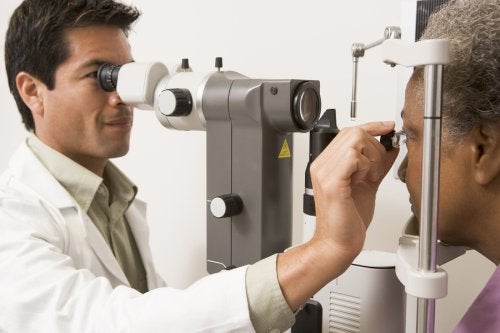
-
Tips for Preventing Eye Injuries
As your ophthalmologist in Chicago will tell you, eye care comes down to more than just regular vision check-ups. October is Eye Injury Prevention Month, and there are plenty of steps you can take to help protect your eyes from harm. Read on for some tips on preventing eye injuries.

Gear Up for Sports
Whether you’re a member of an active sports league, or you only play the occasional game of baseball with friends or colleagues, protecting your eyes while participating in athletic activities can be essential for protecting your eye health. While there are many sports that can pose a threat to your eyes, some of the ones that are commonly associated with eye injuries include baseball, hockey, paintball, racquetball, and fishing.
Wear Shades During the Day
With the arrival of fall, you may be less concerned with protecting your body from the sun’s ultraviolet (UV) rays. However, it’s important to realize that UV rays reach the earth’s surface year-round, even on cloudy days. For this reason, you should continue wearing sunglasses that block 100% of UV rays throughout the fall and winter. This eye safety step is particularly important if you plan to spend time skiing or on the water, as sunlight can reflect off of snow and water and potentially harm your eyes. According to ophthalmologists, eyes can suffer something similar to a sunburn, called photokeratitis, when damaged by UV rays.
Practice Safety Throughout Projects
If you have a home improvement to-do list that you’re hoping to get through this season, then your eye doctor would want you to remember to practice good eye safety as you take on each of these tasks. Even small projects, such as installing shelving or trimming shrubs, can lead to eye injuries if you’re not careful. To protect your eyes from the dangers of flying objects like nails, wood splinters, and branches, remember to wear safety glasses or another form of protective eye wear while working on your DIY projects.
-
How Is Glaucoma Diagnosed?
Visiting your local optical center in Chicago for routine checkups with an eye doctor is important for protecting your vision and practicing good eye care. However, this is particularly true for individuals over age 40. At this stage in your life, you have a greater risk of developing glaucoma.
Glaucoma is an eye disease that causes damage to the optic nerve. Because many people do not experience any glaucoma symptoms until the damage is significant, it’s important to schedule routine checkups with an ophthalmologist. To diagnose this condition, he will perform a comprehensive eye exam to check your peripheral vision, measure your eye pressure, measure your cornea’s thickness, examine your eye’s drainage angle, and measure or image your optic nerve.
If your optic nerve has already suffered damage due to glaucoma, then this cannot be reversed. However, your ophthalmologist may recommend laser surgery, medication, or glaucoma surgery to help slow the progression of the disease and preserve your remaining eyesight.
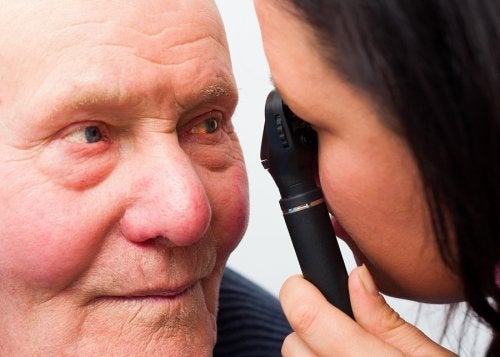
-
Spotlight on Helen Keller Deaf-Blind Awareness Week 2017
There are people in the world who face extreme obstacles daily, and many of us can’t even imagine the struggles they go through. Helen Keller is an excellent example of someone who combatted serious handicaps in both deafness and blindness, and there is much to learn from her story. While a cataract surgeon or eye doctor in Chicago will have intimate knowledge of blindness, most people have a great deal to learn. Keep reading as we put the spotlight on Helen Keller Deaf-Blind Awareness Week 2017.
No matter how well our intentions may be, we can only focus our efforts on solving a problem after we’ve become aware of it. Most people over a certain age understand what deafness and blindness are, but there is much more to learn about these conditions. When you go about your daily life, you might not think about what your normal routine would be like without one or more of your senses. The purpose of Helen Keller Deaf-Blind Awareness Week is to take a week out of each year to discuss the presence of deaf-blindness in families within our communities so we can all widen our perspectives.

-
The Patient’s Guide to IOLs
If you’re having trouble with your vision, your eye doctor in Chicago might recommend the use of intraocular lenses , or IOLs. These intraocular implants can help patients deal with certain types of eye diseases, and in doing so they can improve their happiness and comfort. There are a few different kinds of IOLs, and you can discuss the different types with your ophthalmologist to find out which might be right for you. However, they are typically all made of the same material. Read ahead for a quick look at the patient’s guide to IOLs.
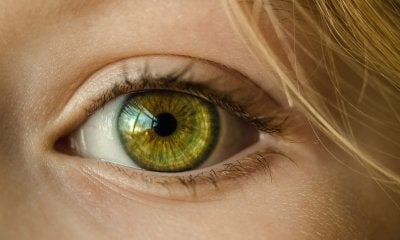
When IOLs Are Appropriate
The human eye has many different parts, from the pupils that adjust to let different amounts of light in, to the retinas in the back of the eyes where the images land. When it comes to focusing and visual acuity, you rely primarily on your lenses. Unfortunately, many peoples’ lenses gradually lose strength over time. If you have severe cataracts, then your eye doctor may remove your lens entirely. In this case, the ophthalmologist may replace your original lens with an IOL, which is just an artificial replacement lens. By replacing your cataract lens with a clear new one, you can alleviate issues like blurriness and dulled colors.
Types of IOLs
When you talk to your eye doctor about the possibility of an IOL, you will find that there are quite a few different kinds. A monofocal IOL tends to be the go-to choice after cataract surgery. People typically use these IOLs for distance and wear eye glasses for reading. Toric IOLs are helpful for those with astigmatism, and multifocal IOLs handle both distance and close-up vision. You can also talk to your eye doctor about accommodative IOLs, which can actually change shape after being placed.
What IOLs are Made of
Although there are different kinds of IOLs that you can use after cataract surgery, most of them are made of acrylic or silicone. Additionally, intraocular lenses may help protect your eyes from overexposure to ultraviolet rays. This can prevent additional damage to your eye health in the future.
-
The Truth About Glaucoma Symptoms
Some eye conditions are obvious, but others require the help of an eye doctor in Chicago to diagnose. Even those who practice excellent eye care may run into certain eye health issues, so it’s wise to maintain a working relationship with your ophthalmologist. Glaucoma is one eye condition that can compromise your vision and ultimately change your quality of life. You might not notice signs of the disorder on your own, but your professional will be able to detect its presence. Read on for the real truth about glaucoma symptoms.
Glaucoma symptoms are tricky because they don’t always exist. In fact, many people with glaucoma don’t experience any symptoms at all until the disease progresses. Those who do notice symptoms of this condition may experience blurred or distorted vision. As the disease progresses, you might experience vision loss as well. Angle-closure glaucoma is a rare kind that may cause nausea and eye pain. Since there is no cure for glaucoma and you might not actually experience symptoms, it’s extra important that you visit your eye doctor for screenings. Your ophthalmologist can check for signs of glaucoma, and he or she can devise a treatment plan if you appear to have the disease.
